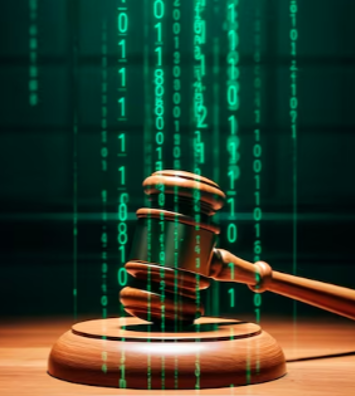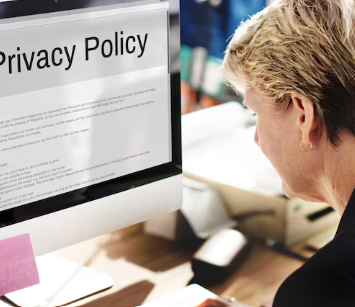Article by Clyde Shuman
In a precedential decision, the Federal Circuit clarified a significant element of the equation for determining patent term extension (“PTE”), holding that “C” delay for appellate review (35 U.S.C. § 154(b)(1)(C)(iii)) requires a reversal decision made by the Patent Trial and Appeal Board or a reviewing court. As such, “C” delay excludes time spent pursuing such a decision when, because of an examiner reopening of prosecution, no such decision is ever issued. Chudik v. Hirshfeld, Appeal No. 2020-1833 (Feb. 8, 2021).
The prosecution history of Dr. Chudik’s patent is important. Dr. Chudik originally filed his application in September 2006. The examiner issued a second rejection of all then-pending claims as unpatentable in 2010. Rather than immediately taking an appeal to the Board (35 U.S.C. § 134(a)), Dr. Chudik requested a continued examination under 35 U.S.C. § 132(b). The examiner again rejected his claims in 2014 and Dr. Chudik then appealed to the Board. Instead of filing an answer, the examiner reopened prosecution, only to reject the claims as unpatentable on a different ground, in early 2015. That 2014–2015 process—notice of appeal filed, prosecution reopened before answer, new rejection on a new ground—occurred again in 2015 and again in 2016. Finally, in 2017, while Dr. Chudik’s fourth notice of appeal was pending, the examiner issued yet another new rejection, but this one led, in 2018, to a notice of allowance after Dr. Chudik altered some of his claims. Dr. Chudik’s patent issued on May 15, 2018, eleven and a half years after the application was filed.
The PTO ultimately awarded Dr. Chudik a patent term adjustment of 2,066 days under 35 U.S.C. § 154(b) but rejected his argument that he was entitled to an additional 655 days for “C” delay for the time his four notices of appeal were pending in the PTO. The PTO concluded that “C” delay did not apply here because, in light of the examiner’s reopening of prosecution, the Board never had jurisdiction over the appeals and (2) there was no Board (or reviewing court) reversal. Dr. Chudik twice asked the PTO to reconsider its conclusion, but the PTO twice reaffirmed its position.
In September 2019, Dr. Chudik filed a complaint against the PTO’s Director in the U.S. District Court for the Eastern District of Virginia, alleging that he was entitled to 655 additional days of C-delay for his patent. In his motion for summary judgment, Dr. Chudik argued that “appellate review” in the C-delay context refers to the entire process for review by the Board, beginning when a notice of appeal is filed (and not only when the Board receives jurisdiction). He also argued that the statutory language, “a decision in the review reversing an adverse de-termination of patentability,” covers an examiner’s own decision to re-open prosecution.
The district court rejected Dr. Chudik’s arguments, concluding that, because the statutory language is ambiguous, the PTO’s position must be affirmed because that position is reasonable. Per the district court: (1) “appellate review by the [Board]” could “reasonably be understood to refer to the actual process of substantive review by the [Board] rather than the period initiated procedurally as part of an administrative sequence” and (2) “a decision in the review” reasonably can refer to an actual Board (or court) decision, not an examiner reopening prosecution.
The district court entered final judgment against Dr. Chudik, and he appealed. On appeal, the Federal Circuit held that the statutory language authorizing C-delay, 35 U.S.C. § 154(b)(1)(C)(iii), requires that a patent issue under a Board decision that reversed the examiner’s unpatentability ruling or under a court decision that reversed a Board unpatentability ruling. The Court called Dr. Chudik’s interpretation of the statute (covering an examiner’s reopening prosecution that withdraws a rejection) “if not linguistically impossible, strained.”
The Court noted that, in the context of “appellate review” of a particular reviewable ruling, the term “reverse” is typically reserved for action taken by the appellate reviewer to undo the ruling being reviewed. Per the Court, “‘Appellate review’ itself commonly means what a distinct reviewing authority does, not a reconsideration of one’s own decision.” Further per the Court, “in an appellate review, the normal meaning of ‘reverse’ is an action by the reviewer with respect to the decision being reviewed.” The Court reasoned that this “ordinary meaning” did not include the examiner’s repeated reopening prosecution in this case to withdraw her own decision.
The Court found that the Patent Act supports this ordinary-usage distinction, noting that 35 U.S.C. § 6(b)(1) provides that “[t]he [Board] shall . . . on written appeal of an applicant, review adverse determinations of examiners.” The Court also cited its own recent precedent holding, inter alia, that “The [Board]’s rules allow applicants to seek review of examiners’ final rejections before a higher authority, the [Board]. . . . Allowing examiners to reopen prosecution does not deprive applicants of their right to appeal final examiner rejections because reopening prosecution cannot circumvent [Board] review.” Hyatt v. USPTO, 904 F.3d 1361, 1375 (Fed. Cir. 2018). Further, the Court noted that its ordinary use of “reverse” in this context refers to decisions by the Board (not the examiner).
Turning to the C-delay provision of § 154(b), the Court found that, given the statutory language speaking of “appellate review by” the Board or a court, the subsequent reference to a “decision in the review” is most naturally understood to refer to a decision by the appellate tribunal, i.e., the Board or a court, and not, for example, an examiner’s “decision” to reopen prosecution made during the review. The Court found that this understanding was bolstered by the statutory language specifying that what the decision must be is a “revers[al].” Considering the language as an integrated whole, the Court concludes that the C-delay provision “is most fairly read to require a Board or court decision reversing an adverse ruling (e.g., by the Board of the examiner or by a court of the Board).”
As an aside relevant to scenarios involving reopening prosecution after a notice of appeal has been filed, the Court noted that, in adopting its PTE regulations in 2012, the PTO explained that the limitations on C-delay adjustments to patent term extension—interpreting “appellate review” not to start until Board jurisdiction attaches, and requiring a Board decision—may be offset by an increased availability of B-delay adjustments for time that exceeds three years of prosecution if an examiner’s reopening occurs before Board jurisdiction attaches. The Court found, in this case, as the parties agreed, no such B-delay increase occurred because Dr. Chudik, rather than appealing his 2010 final rejection, sought continued examination, triggering a statutory exclusion from the time counted for a B-delay adjustment. (35 U.S.C. § 154(b)(1)(B)(i)). The Court viewed this as something of a cautionary tale, saying: “The unavailability of B-delay for nearly two years (655 days) of delay in the PTO illustrates what applicants should understand when deciding whether to request a continued examination rather than take an immediate appeal. The potential benefit of immediate re-engagement with the examiner through such continued examination comes with a potential cost.”



